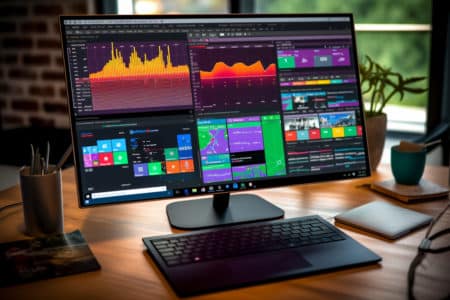Images are essential for enhancing the value of your web pages. But it also plays an important role in SEO, not to mention social media marketing. Why is that? We’ll explain.
Images and SEO, a strong link
Not so long ago, to rank well with search engines, all you had to do was find the right keywords. But things have changed. Today, images play an important role in SEO, and are an additional asset in achieving good rankings. Algorithms can now take images into account. The diversity of content (texts, videos, images, gifs, memes, infographics…) now plays a major role in SEO.
Why are images important for SEO?

Above all, images offer a particularly enriched user experience. And when you consider that visitors decide in less than 8 seconds whether or not to stay and consult a site’s information, it’s imperative to catch their eye without delay. And image has a major role to play. We’re reminded of the adage well known to advertising professionals: “a picture is worth 1000 words”.
Visual content can therefore become particularly important in an SEO policy. Images capture the brain’s attention more easily. It’s more memorable and allows visitors to see immediately what’s going on. If they’re carefully chosen, and therefore present subjects related to the text, visitors will know right away what’s going on, without having to waste time. An image makes it easier to retain related information. A survey has shown that information heard without an accompanying image will not really be retained effectively, whereas if it is accompanied by an image, it will be retained over several days.
With images, a blog page will be more attractive. An image can also make complex data easier to understand (in which case a table or graph is an incomparable aid).
A quicker understanding of the page’s content is crucial to attracting and retaining visitors. With an image, they’ll be able to understand the content more quickly. In this respect, images play an important role in enhancing the user experience.
The fact that content is revealed through images is also an important factor in improving the average time spent on a site. Time spent on a site is a significant factor, and therefore plays a role in SEO. With an image, the visitor immediately knows what the site is about. If they stay, it means they’ll be looking at the page for longer. And that’s no mean feat. In fact, since 2015, Google, one of the biggest search engines, has been using a Rankbrain algorithm that takes into account the time spent on a site. With an image (whatever it may be), you improve this time spent on your pages. And therefore, logically, your ranking on this search engine.
Other benefits of images for SEO?

A visual can also help you get more backlinks, which is part of a relevant SEO strategy. Quality links are important for search engines. A high-end infographic, for example, plays a major role in enhancing a blog.
But images are not an improvised part of a quality SEO strategy. You’ll need to combine influencer marketing (making yourself known on social networks), public relations and the support of your readers. And l\’image will also help create a better relationship and interaction with readers. On today’s social networks, image plays a vital role in your site’s brand image. What’s more, when you consider that Google uses raters that will use brand image for referencing, visual content is going to be essential.
For all these reasons, image plays a very important role in the SEO process. It can’t and shouldn’t be ignored.
Knowing how to optimize visual content for high-performance SEO
Simply putting an image on a site may not be enough. The image must be a well-mastered tool for successful SEO. And to achieve this, a number of steps need to be taken.
It may be essential to optimize the images used. To this end, don’t forget to add tags, alt tags and, of course, a precise description. Nor should you use just any image. They must correspond to your content and brand image. They should be accompanied by strong keywords. For a good SEO strategy via images, it’s also useful not to consider visual content as an end in itself. It’s better to storytell through content and then think about optimizing the various elements one by one to simplify search.




